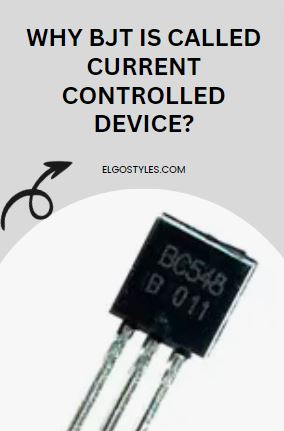Answer:
BJT, or Bipolar Junction Transistor, is referred to as a current-controlled device because its operation is predominantly influenced by the flow of current through its base terminal. The current in the base region controls the amount of current flowing between the collector and emitter terminals.

Reasoning:
- Base Current Controls Operation: BJT consists of a semiconductor material where the flow of base current controls the transistor’s conductivity.
- Emitter-Collector Current Flow: The current flowing from the emitter to the collector is directly proportional to the current flowing into the base.
- Current Amplification: Small changes in the base current result in larger changes in the collector current, demonstrating the amplification effect.
- Transistor Action: The base current initiates transistor action, allowing the flow of charge carriers from emitter to collector.
- Beta (β) Factor: Beta, representing the current gain, quantifies the relationship between the base and collector currents, further emphasizing the current control aspect.
- Current-Driven Switching: In BJT switching applications, the base current determines when the transistor transitions between ON and OFF states.
- Influence on Gain: The magnitude of base current directly influences the gain of the BJT, affecting its ability to amplify signals.
- Small Signal Behavior: BJT’s small-signal parameters, like transconductance, are directly tied to the control of current through the base.
- Amplifier Design: Current-controlled nature is vital in designing amplifiers where precise control over current flow is essential.
- Biasing Considerations: Proper biasing of the BJT involves controlling the base current to achieve the desired operating point and avoid saturation or cutoff.
FAQs:
Q: Why is BJT called a current-controlled device?
A: The flow of current through the base terminal controls the operation and amplification of the BJT.
Q: Can BJT operate without base current?
A: No, base current is essential to initiate transistor action and control the collector current.
Q: How does BJT amplify signals?
A: By controlling the collector current in response to small changes in the base current, achieving signal amplification.
Q: What is the significance of Beta (β) in BJT?
A: Beta quantifies the relationship between base and collector currents, indicating the current gain.
Q: Does BJT exhibit current amplification?
A: Yes, small changes in the base current result in larger changes in the collector current, demonstrating current amplification.
Q: Can BJT be used for switching applications?
A: Yes, base current controls the switching between ON and OFF states in BJT.
Q: How does BJT biasing rely on current control?
A: Proper biasing involves controlling the base current to achieve the desired operating point and avoid saturation or cutoff.
Q: Is BJT’s behavior affected by small changes in base current?
A: Yes, small changes in base current have a significant impact on BJT’s small-signal parameters and overall behavior.
Q: What is transconductance in BJT?
A: Transconductance is a measure of how changes in the base current affect the output current, highlighting the current control aspect.
Q: Can BJT operate solely based on voltage control?
A: No, BJT’s operation is predominantly influenced by the flow of current through its base terminal.
 Electrical Engineering World
Electrical Engineering World